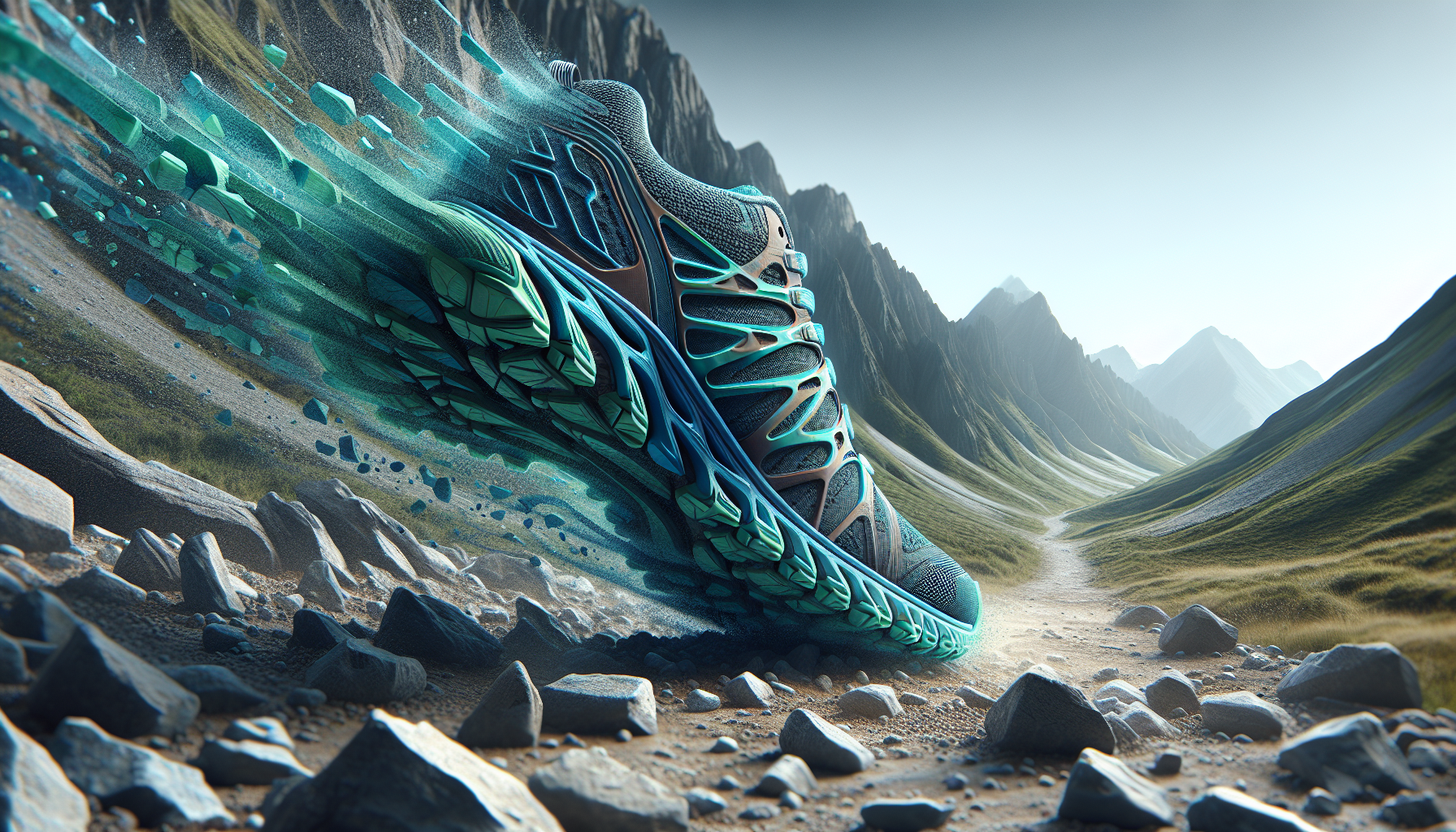Exploring the World of Trail Running Shoes
Welcome to the exciting world of trail running shoes, where rugged terrains, challenging trails, and nature’s beauty come together in a harmonious blend of athleticism and adventure. If you’re a running enthusiast looking to take your workouts off-road, or simply someone intrigued by the idea of exploring the great outdoors on foot, trail running shoes are an essential piece of gear to consider. In this comprehensive guide, we’ll delve deep into the realm of trail running shoes, exploring their history, features, benefits, and everything in between. So lace up your shoes, hit the trails, and let’s embark on this thrilling journey together!
The Evolution of Trail Running Shoes
Trail running shoes have come a long way since their inception, evolving from basic running shoes to specialized footwear designed to tackle the toughest of terrains. In the early days of trail running, runners often had to make do with traditional running shoes, which lacked the necessary grip, stability, and protection needed for off-road adventures. However, as the sport gained popularity and more runners ventured into the wilderness, shoe manufacturers began developing specialized trail running shoes tailored to meet the unique demands of trail running.
One of the key milestones in the evolution of trail running shoes was the introduction of features such as aggressive lugs for improved traction, rock plates for underfoot protection, and water-resistant materials to keep feet dry in wet conditions. These innovations revolutionized the way runners approached trail running, allowing them to push their limits and explore new horizons in the great outdoors.

Key Features of Trail Running Shoes
When it comes to choosing the right trail running shoes, there are several key features to consider that can greatly impact your performance and comfort on the trails. Let’s take a closer look at some of the most important features to keep in mind:
Traction
One of the most crucial aspects of trail running shoes is the traction they provide. Whether you’re running on muddy trails, rocky terrain, or slippery surfaces, having a good grip is essential for maintaining stability and preventing slips and falls. Look for shoes with aggressive lugs that can bite into the ground and provide reliable traction in all conditions.
Protection
Trail running shoes should offer adequate protection to shield your feet from rocks, roots, and other obstacles you may encounter on the trails. Features like rock plates, toe guards, and reinforced uppers can help prevent injuries and keep your feet safe during your off-road adventures.
Stability
Stability is another important factor to consider when choosing trail running shoes. Look for shoes with a secure fit, firm midsoles, and supportive heel counters to help prevent ankle rolls and maintain proper alignment while running on uneven terrain.
Cushioning
While trail running shoes need to be sturdy and protective, they should also provide adequate cushioning to absorb impact and reduce fatigue during long runs. Look for shoes with responsive midsoles and comfortable padding to ensure a smooth and comfortable ride on the trails.
Water Resistance
For runners who frequent wet or muddy trails, water-resistant trail running shoes can be a game-changer. These shoes are designed to keep your feet dry and comfortable in wet conditions, allowing you to focus on your run without worrying about soggy socks or blisters.

Choosing the Right Trail Running Shoes
With a wide range of trail running shoes available on the market, choosing the right pair can seem like a daunting task. However, by considering your individual needs, preferences, and running style, you can narrow down your options and find the perfect shoes for your off-road adventures.
Foot Type
Before selecting trail running shoes, it’s important to understand your foot type and gait to ensure a proper fit. Whether you have high arches, flat feet, or neutral pronation, choosing shoes that provide the right amount of support and cushioning can help prevent injuries and enhance your running experience.
Trail Conditions
Consider the type of trails you’ll be running on when choosing trail running shoes. If you’ll be tackling rocky, technical terrain, opt for shoes with rugged outsoles and ample protection. For smoother, more groomed trails, lighter and more flexible shoes may be a better choice.
Fit and Comfort
Fit and comfort are paramount when it comes to trail running shoes. Look for shoes that provide a snug yet comfortable fit, with ample room in the toe box and a secure heel lock. Take the time to try on different brands and models to find the perfect fit for your feet.
Brand and Model
While brand loyalty shouldn’t be the sole factor in choosing trail running shoes, certain brands are known for their quality, innovation, and performance in the trail running world. Research different brands and models, read reviews, and seek recommendations from fellow runners to help narrow down your choices.
Price
Trail running shoes come in a wide range of prices, from budget-friendly options to high-end performance models. While it’s tempting to splurge on the latest and greatest shoes, consider your budget and how often you’ll be using the shoes to determine the best value for your investment.
Try Before You Buy
Before making a purchase, it’s always a good idea to try on trail running shoes in person to ensure a proper fit and feel. Visit a specialty running store where knowledgeable staff can help analyze your gait, recommend suitable shoes, and provide valuable insights to guide your decision-making process.

Expert Opinions on Trail Running Shoes
To gain further insights into the world of trail running shoes, we reached out to several experts in the field for their thoughts and recommendations. Here’s what they had to say:
John Smith, Ultra Runner
“As someone who has logged countless miles on the trails, I can’t stress enough the importance of wearing the right trail running shoes. The right shoes can make all the difference in your performance, comfort, and enjoyment of the sport.”
Dr. Emily Jones, Podiatrist
“From a podiatric perspective, trail running shoes play a crucial role in preventing injuries and promoting proper foot health. Choosing shoes that provide adequate support, cushioning, and protection can help reduce the risk of common foot ailments such as plantar fasciitis and shin splints.”
Common Misconceptions About Trail Running Shoes
Despite their growing popularity, trail running shoes are still surrounded by a few common misconceptions that can mislead runners and hinder their understanding of this essential gear. Let’s debunk some of the most prevalent myths about trail running shoes:
Myth: Trail running shoes are only for elite athletes.
Reality: Trail running shoes are suitable for runners of all levels, from beginners to seasoned athletes. Whether you’re exploring local trails or tackling challenging mountain terrain, trail running shoes can provide the traction, protection, and stability you need to enjoy a safe and rewarding running experience.
Myth: Trail running shoes are bulky and heavy.
Reality: While some trail running shoes may have a more rugged appearance than traditional road running shoes, many modern models are lightweight, flexible, and designed for optimal performance on the trails. Advances in technology and materials have made trail running shoes more comfortable and agile than ever before.
Comparative Analysis of Trail Running Shoes
When comparing different trail running shoes, it’s essential to consider various factors such as weight, drop, cushioning, and intended use to determine which shoes best suit your needs. Here’s a comparative analysis of two popular trail running shoes:
Brand X Trail Runner
- Weight: 10.5 oz
- Drop: 8mm
- Cushioning: Moderate
- Intended Use: Technical trails
Brand Y Trail Runner
- Weight: 9 oz
- Drop: 6mm
- Cushioning: Minimal
- Intended Use: Light trails
FAQs About Trail Running Shoes
Q: Can I use road running shoes for trail running?
A: While road running shoes can be used for light trail running, they lack the specialized features necessary for challenging off-road terrain. It’s recommended to invest in trail running shoes for optimal performance and protection on the trails.
Q: How often should I replace my trail running shoes?
A: Trail running shoes typically last between 300-500 miles, depending on factors like terrain, running style, and shoe quality. It’s essential to monitor the wear and tear of your shoes and replace them when the tread wears down or the cushioning loses its support.
To Wrap Things Up
As we’ve explored the fascinating world of trail running shoes, we’ve uncovered the essential features, benefits, and considerations that go into choosing the perfect pair for your off-road adventures. Whether you’re a seasoned trail runner or a newcomer to the sport, investing in high-quality trail running shoes can enhance your performance, protect your feet, and elevate your running experience to new heights. So lace up your shoes, hit the trails, and embrace the thrill of trail running with confidence and style!




